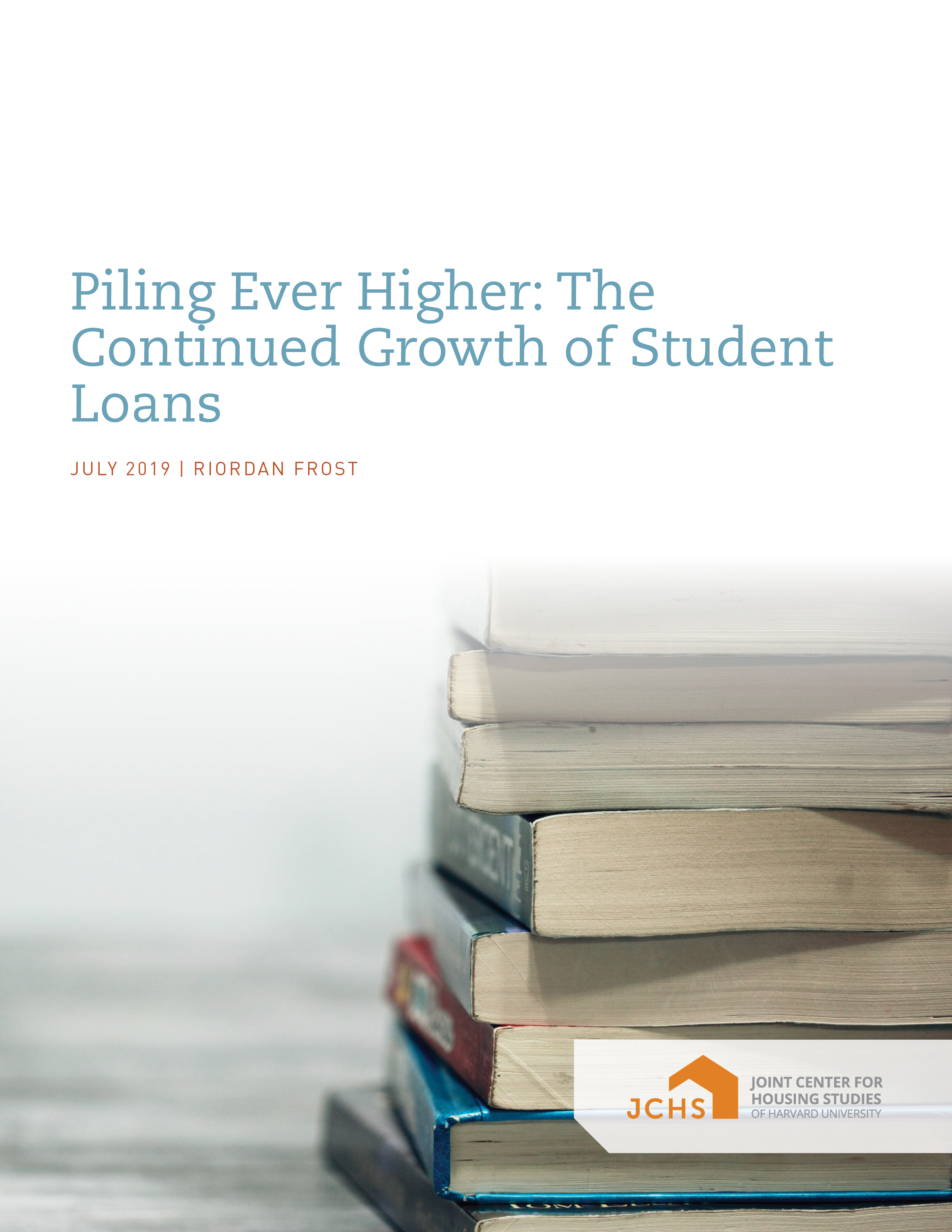Piling Ever Higher: The Continued Growth of Student Loans
Compared to 2013, a higher share of US households had outstanding student loans in 2016, and the typical borrower’s debt also increased markedly during that period, according to data from the 2016 Survey of Consumer Finances (SCF). This research brief, which updates a JCHS research brief that analyzed data from the 2013 SCF (Lew 2015), also finds that while the incidence and magnitude of loans were especially high among young households in 2016, older households were increasingly likely to include someone with outstanding student loan debt as well. The number of households with high levels of student loan debt is also growing, though the majority of borrowers owe less than $25,000. Regardless of the amount owed, however, this brief finds that young households repaying student loans had less wealth than young households without student loan debt in 2016, across all levels of educational attainment.
Perhaps surprisingly, the data also show that payment levels and burdens have not risen as quickly as total debt amounts, which suggests that borrowers have been opting for longer payback schedules with more manageable payment plans, which would help explain the increasing prevalence of student loan debt among older households. Many borrowers are not making payments, however, and for the first time in SCF data, the number of young renters with student loans who were not making payments in 2016 exceeded the number of young renters who were paying back their loans.
Download Figure Data (xlsx)

